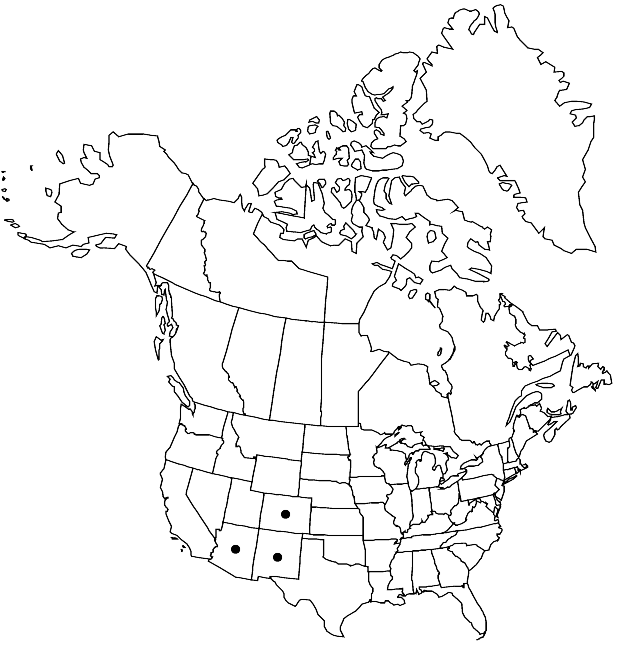Draba helleriana
Pittonia 4: 17. 1899.
Biennials or perennials; (short-lived); caudex simple or branched; not scapose. Stems branched, (0.1–)1.5–4.3(–5.1) dm, hirsute throughout, trichomes simple, 0.4–1.3(–1.8) mm, with short-stalked to subsessile, 3–5-rayed ones, 0.2–0.4 mm, (some slightly coarser, 2-rayed). Basal leaves rosulate; petiolate; petiole base ciliate or not; blade oblanceolate to obovate, 0.9–4.1(–5.2) cm × 2–7(–10) mm, margins entire or dentate, surfaces pubescent, abaxially with stalked, cruciform, and fewer 3–5-rayed trichomes, 0.1–0.6 mm, adaxially with cruciform and simple trichomes, 0.4–1.3 mm, and smaller 2-rayed ones. Cauline leaves (8–)12–31(–43); sessile; blade ovate to lanceolate or oblong, margins usually dentate, rarely subentire, surfaces pubescent as basal. Racemes 10–52(–83)-flowered, usually ebracteate, rarely proximalmost 1 or 2 flowers bracteate, elongated in fruit; rachis not flexuous, pubescent as stem. Fruiting pedicels horizontal to divaricate-ascending, straight or slightly curved upward, 4–10(–13) mm, pubescent as rachis abaxially, glabrous adaxially. Flowers: sepals oblong, 2.5–4 mm, pubescent, (trichomes simple and stalked, 2-rayed); petals yellow, oblanceolate, 5–7 × 1.5–2.2 mm; anthers oblong, 0.5–0.8 mm. Fruits (not appressed to rachis), lanceolate to ovate or oblong-lanceolate, slightly to strongly twisted or plane, flattened, 5–15 × 2–3.5 mm; valves puberulent, trichomes simple and subsessile, 2(–4)-rayed, 0.03–0.25(–0.8) mm; ovules 14–28 per ovary; style (1–)1.5–3.5 mm. Seeds oblong, 1–1.3 × 0.6–0.8 mm. 2n = 18.
Phenology: Flowering Jun–Sep.
Habitat: Oak and pine-fir woodlands, aspen groves, rocky meadows
Elevation: 2100-3600 m
Distribution

Ariz., Colo., N.Mex., Mexico (Nuevo León).
Discussion
Draba helleriana is highly variable and was divided by C. L. Hitchcock (1941) into four varieties. For a discussion of those and the circumscription of the species, see I. A. Al-Shehbaz and M. D. Windham (2007).
Selected References
None.